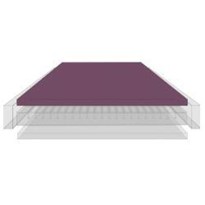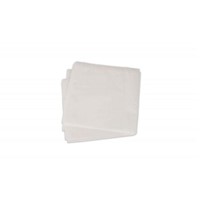Sometimes missed and under appreciated as a potential source of contamination is the standard hospital mattress.
This article aims to answer some of the most common questions we get asked regarding support surfaces and what steps you can take, if they become damaged or fail to perform.
How do hospital mattresses get damaged?
Hospital mattresses can be damaged through daily wear and tear, ageing, tears or cuts made by sharp objects or chemical damage from disinfectants and regular cleaning. Therefore it’s not uncommon to have damaged mattresses throughout your facility. The solution is making sure the damaged surfaces are replaced/ fixed immediately to prevent the potential spread of infection.
What are the infection risks associated with damaged mattresses?
Failing to prevent the spread of HAI’s and pathogens in damaged surfaces are among the leading threats to your patients safety. When mattresses become contaminated by skin cells that could possibly be covered with microscopic organisms such as bodily fluids, urine or faeces, or organisms transmitted via poor hand hygiene, this can result in infectious outbreaks.
Furthermore, when a mattress is damaged, it becomes far more difficult to clean and it loses its original physical and chemical properties designed to combat fluid penetration and bacterial growth.
What steps can I take to prevent damage?
Implementing routine inspections of your hospital mattresses is said to contribute greatly to controlling mattress-associated infections. This is due to the early identification of damaged surfaces allowing them to either be replaced or repaired quickly before they become problematic.
However, you might be thinking that the costs are simply too high to replace every single mattress, especially those with minor or early-stage damage. Plus, there are additional costs such as, disposal of the mattress, the cost of writing off equipment prematurely and the time spent waiting for a new one to arrive.
There is a solution to all of these common problems, mattress repair patches have become increasingly more popular. Their ability to provide a quick solution to managing potential infections seen in damaged mattresses is a much more convenient and economical way to resolve damaged surfaces than replacing them. Repair patches are manufactured from medical-grade, waterproof and chemical-resistant materials designed to restore a support surface back to a hygienic state. If you’re looking for a solution to completely prevent your mattresses from damage then regular internal training is often required on how to properly care for your mattresses. You may also like to refer to your suppliers guidelines on how to clean and maintain the mattresses correctly to ensure they are being cared for in a way which will not void any warranties.
When should I replace a hospital mattress?
If your facility has a solid routine in place for inspecting mattresses then early identification will be hugely beneficial to preventing outbreaks within your facility. Knowing when a mattress has surpassed the point of a quick solution such as the CleanPatch is also crucial. There are four suggested key signs to look out for when your mattress is ready to be replaced;
- Your mattress is starting to sink into the bed frame
- When a mattress begins to sag, lose tension or body impressions start to linger it typically means that the core of the mattress has deteriorated and is a strong indication that the mattress has indeed reached end of life.
- The cushioning in the mattress is worn
- Deteriorating cushion is another strong indicator that your mattress has seen better days, this can start to affect patient comfort and may cause pressure injuries due to the lack of support.
- Your mattress has surpassed its due date
- This means that your mattress is well and truly passed the recommended lifespan from your chosen manufacturer. The main reason why suppliers recommend replacing a mattress is due to its potential to harbour bacteria and pathogens from many years of use.
- The mattress has become difficult to maintain and clean
- If your mattress has been fixed regularly and is becoming too difficult to maintain and clean this could be another sign that it's time to replace. The older a mattress is, the more it could accumulate dirt and dust which makes it harder to keep clean.
How long does a hospital mattress last?
Each support surface's lifespan differs depending on the make and model. The same can be said about manufacturers warranties, as some can be as low as one year or as high as ten years. As mattresses age, undergo daily wear and tear and are rigorously cleaned, the material can start to deteriorate overtime. Catching this damage early and restoring or replacing mattresses to an intact and hygienic state can preserve high performance, cleanability and lifetime use.
What are my options moving forward?
So, your facility has recognised the importance of a routine program to inspect damaged mattresses and have found that some are ready to be replaced or brought back to an intact state. Replacing your mattresses should be easy and stress free, let us show you how.
Contact us to talk directly with the team today!







































